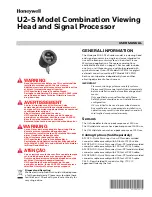
Level One Memory System
ARM DDI 0363G
Copyright © 2006-2011 ARM Limited. All rights reserved.
8-18
ID073015
Non-Confidential
8.5
About the caches
You can configure the L1 memory system to include instruction and data caches of varying
sizes. You can configure whether each cache controller is included and, if it is, configure the
size of each cache independently. The cached instructions or data are fetched from external
memory using the L2 memory interface. The cache controllers use RAMs that are integrated
into the Cortex-R4 macrocell during implementation.
Any access that is not for a TCM is handled by the appropriate cache controller. If the access is
to non-shared cacheable memory, and the cache is enabled, a lookup is performed in the cache
and, if found in the cache, that is, a cache hit, the data is fetched from or written into the cache.
When the cache is not enabled and for Non-cacheable or shared memory, the accesses are
performed using the L2 memory interface.
Both caches allocate a memory location to a cache line on a cache miss because of a read, that
is, all cacheable locations are
Read-Allocate
(RA). In addition, the data cache can allocate on a
write access if the memory location is marked as
Write-Allocate
(WA). When a cache line is
allocated, the appropriate memory is fetched into a linefill buffer by the L2 memory interface
before being written to the cache. See
Linefill buffers and the AXI master interface
The linefill buffers always fetch the requested data first, return it, and then fetch the rest of the
cache line. This enables the data read to be used by the pipeline without waiting for the linefill
to complete and is known as
critical word first
and
non-blocking
behavior. If subsequent
instructions require data from the same cache line, this can also be returned when it is fetched
without waiting for the linefill to complete, that is, the caches also support
streaming
. If an error
is reported to the L2 memory interface for a linefill, the linefill does not update the cache RAMs,
but an abort is only generated if the error was reported on the critical word.
If all the cache lines in a set are valid, to allocate a different address to the cache, the cache
controller must evict a line from the cache.
Writes accesses that hit in the cache are written into the cache RAMs. If the memory location is
marked as
Write-Through
(WT), the write is also performed on the L2 memory interface, so that
the data stored in the RAM remains coherent with the external memory system. If the memory
is
Write-Back
(WB), the cache line is marked as dirty, and the write is only performed on the L2
memory interface when the line is evicted. When a dirty cache line is evicted, the data is passed
to the Eviction Buffer in the L2 memory interface to be written to the external memory system.
See
The cache controllers also manage the cache maintenance operations described in
Each cache can also be configured with either parity or ECC error checking schemes. If an error
checking scheme is implemented and enabled, then the tags associated with each line, and data
read from the cache are checked whenever a lookup is performed in the cache. See
For more information on the general rules about memory attributes and behavior, see the
ARM
Architecture Reference Manual
.
8.5.1
Store buffer
The cache controller includes a store buffer to hold data before it is written to the cache RAMs
or passed to the AXI master interface. The store buffer has four entries. Each entry can contain
up to 64 bits of data and a 32-bit address. All write requests from the data side that are not to a
TCM interface are stored in the store buffer.
















































